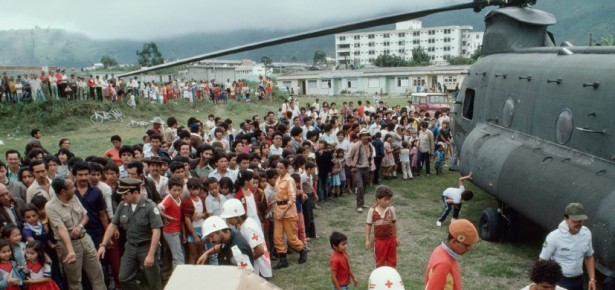
Hazards cannot be avoided. Typhoons and earthquakes are part of the law of nature. Disaster, however, results when local and national communities fail to identify the risks associated with hazards and plan accordingly. An understanding that disasters are socially constructed problem and not “acts of God” outside of the sphere of human influence is essential for effectively reducing exposure to hazards and then, if necessary, responding to hazards.
Law would not have prevented the torrential rains but might have prevented the subsequent disaster.
Because disasters are social constructions and law is a tool for managing social-constructed relations, proactive law and policy may play an increasingly critical role in alleviating human suffering. As the recent September 2014 floods in the Indian state of Jammu and Kashmir illustrated, an ounce of prevention and a pinch of preparation can be worth many tons of post-disaster relief. In spite of warnings from the state flood control department of the potential for catastrophic flooding in the region due in part to the conversion of wetlands that had historically retained floodwaters into building sites, thousands of people lost their homes, businesses, and lands. Law would not have prevented the torrential rains but might have prevented the subsequent disaster.
As both the number and cost of annual disasters increase, policymakers and planners are contemplating what role law should be playing in disaster relief and disaster reduction. While national and municipal law have always served an integral role in coordinating and executing disaster relief, international law is becoming increasingly relevant to disaster response efforts in our increasingly globalized world. As the 2004 South Asian Tsunami illustrated, some disasters refuse to respect national boundaries. Involving victims and property damage in Bangladesh, India, Indonesia, Malaysia, Maldives, Myanmar, Seychelles, Somalia, South Africa, Sri Lanka, Tanzania, Thailand, and Yemen and property damage in Australia, Madagascar, Mauritius, and Oman, the Tsunami also impacted nationals from 44 States from across the world who were visiting or working in the various impacted South Asian states. In all, 61 States experienced losses due to the Tsunami. International law played an important coordinating and facilitating role in communicating disaster information, collecting and disbursing emergency relief to communities, repatriating victims remains and property, and financing the rebuilding of devastated communities.
While we can only hope that there will be no repeat of the South Asian Tsunami, given the predictions of future climate change events involving sea level rise for Pacific Ocean Small Island Developing States and droughts in the multi-state Sahel region (Senegal, Mauritania, Burkina Faso, Mali, Algeria, Nigeria, Niger, Chad, Sudan, and Eritrea), transboundary suffering is likely to increase in the decades to come. Nations and municipalities alone may not have the essential on the ground resources to respond to large-scale disasters. International law is a potential tool for alleviating some of the suffering by creating mutually negotiated rules for global and regional cooperation that may include harmonization of State practices to ensure that sovereign borders do not become barriers to future disaster relief and disaster prevention efforts.
But States are not the only actors in international law whose interests would be protected by a robust application of international law in the arena of disaster relief. The opening of the United Nations Charter preamble references “we the peoples of the United Nations” which reminds us that international law is not just about protecting the interests of nation states but also the interest of each human being. International law and especially international human rights law is especially relevant to disaster relief because it has the potential to do more than simply coordinate intergovernmental relief activities. Intergovernmental and other international agencies providing rescue assistance may in the course of a disaster end up serving basic rule of law functions in order to protect the human rights of disaster victims until national and local institutions are able to regain capacity.
Latest Comments
Have your say!